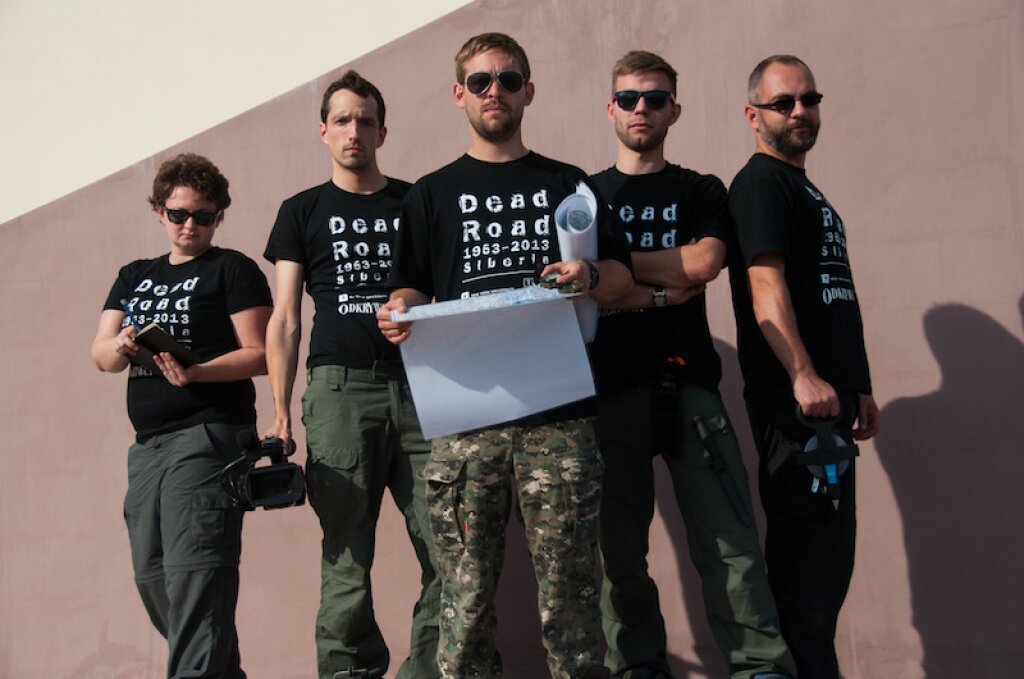Join us on Thursday, March 6th to discover an expedition along the Transpolar Mainline!
The Dead Road expedition was launched in 2013 by a team of academics and explorers, including Tomek Grzywaczewski – the main organizer, journalist, and extreme traveler; Maciek Cypryk – a logistics expert; Lukasz Orlicki - a field historian from the Polish “Odkrywca” magazine; Marek Kozakiewicz – cinematographer; Ania Hyman – NYU graduate history student; as well as Dima – a local Evenk hunter and indispensable guide.
Some background to the expedition:
In January 1949, on Stalin’s orders, the war-weary Soviet nation embarked on a monstrous and extremely expensive project in the polar circle area of central Siberia. The Transpolar Mainline was to connect Salekhard, in Yamalo-Nenets Autonomous Okrug, with the newly built river harbor of Igarka, Krasnoyarsk Krai. The planned route was to cross the inhospitable areas of the taiga and swampy tundra. By March 1953, when the project was suspended, over a hundred-thousand prisoners, working in extreme weather conditions, managed to lay only about 700 km of train tracks. For over four years, utilizing mainly the water routes of the Yenisei, Ob, and Turukhan rivers, the construction site was supplied with forced laborers, paid workers, administrative personnel, as well as all the necessary equipment – tracks, railroad ties, tools, train-cars, and locomotives. When, upon Stalin's death, the unreasonable and exceedingly expensive project was discontinued, the entire enterprise was evacuated in under two weeks. This unprecedented hurry led to the abandonment, throughout the entire span of the construction site, of an uncountable store of items – from objects of everyday life to fragments of the finished railroad: Gulag barracks, administrative buildings, even entire train echelons. On top of that, the surrounding taiga was dotted with the graves of thousands of prisoners. This desolate, forbidding place became known as the Dead Road.
Fast forward to the present:
The main goal of expedition Dead Road 2013 was to collect as much information and historical sources as possible on the subject of the Transpolar Mainline. Simultaneously, the team sought to immerse itself in the ethnic conglomerate of northern Siberia, with its unique mixture of Russians, Evenks, Selkups, Kets, and the numerous descendants of forced migrants.
The most extreme - and potentially impossible - goal of the expedition was to reach one of the most remote, inhospitable parts of the Dead Road in order to conduct never-before-undertaken research, including precise measurements of the camps. During two intense weeks in the heart of the taiga, the team managed to reach four main camp complexes that we have managed to thoroughly document.
The team hiked in some of the most unwelcoming areas of the globe, sharing their meager supplies with the Selkup and Evenk hunters, who turned out to be incredibly gracious hosts. Expedition members formed friendships that will last forever and learned not only about the bloody history of the Soviet Far North, but most importantly, about human limitation. When the time came to head back home, the team was unanimous in one observation: this was the trip of a lifetime. Now it's time to share the story with others.
Link to written event recap
Live Event



